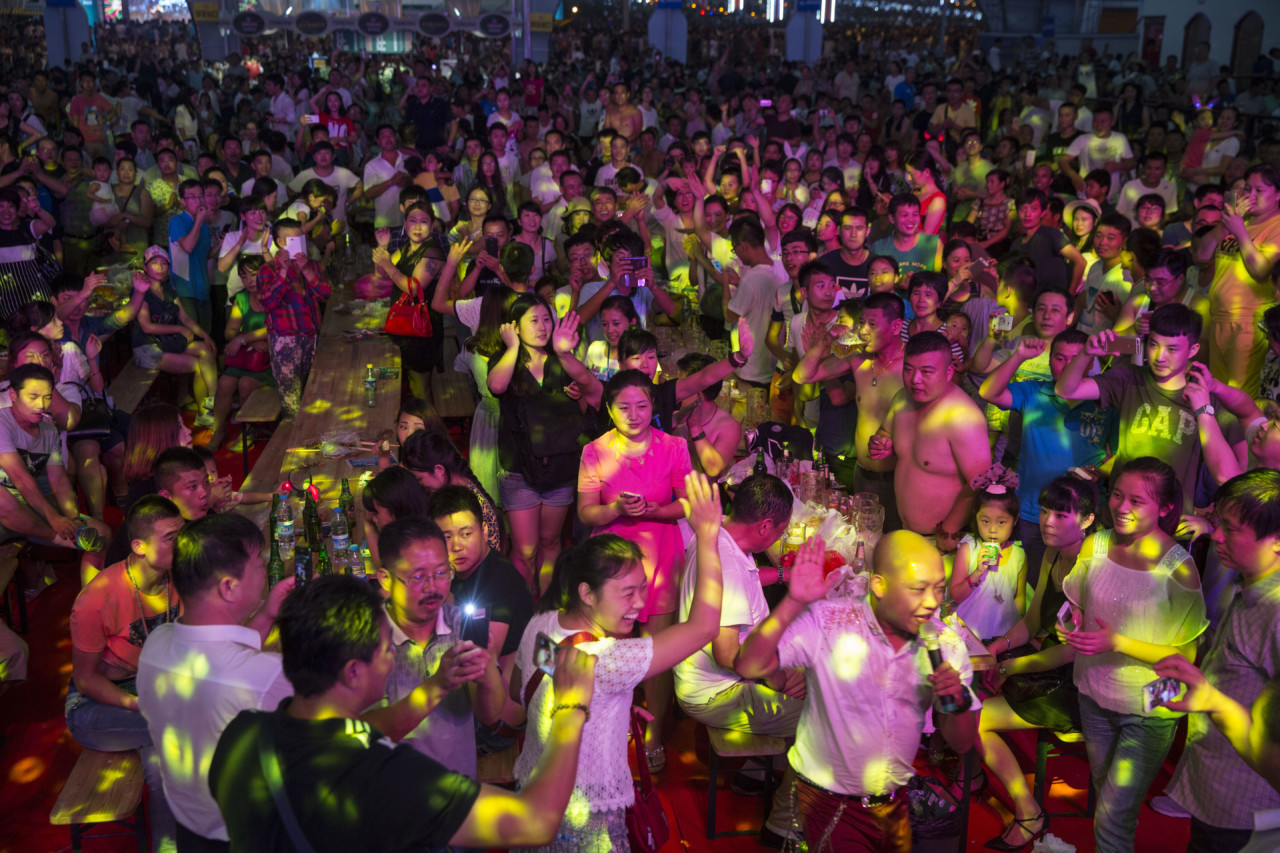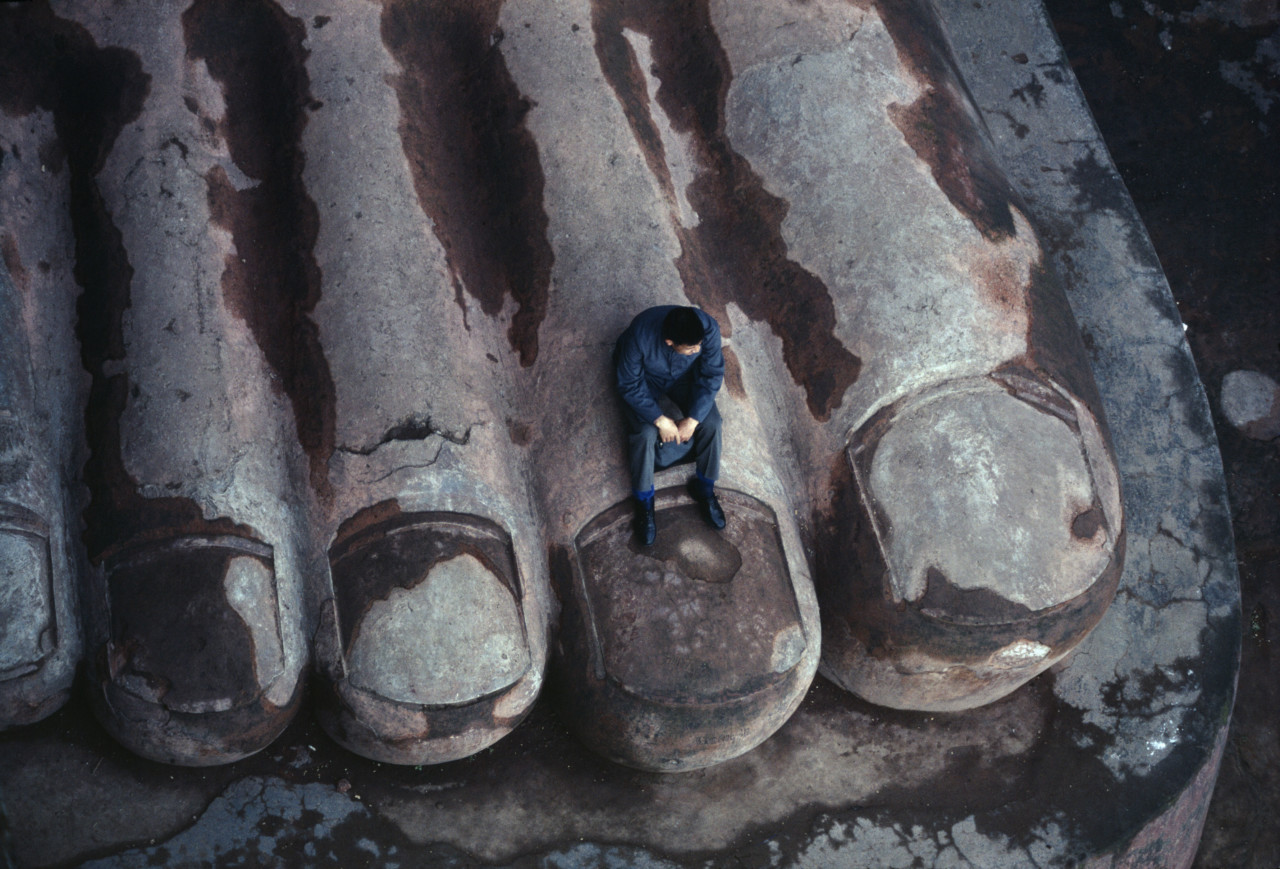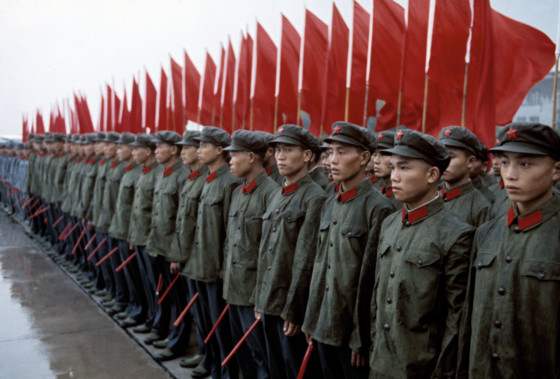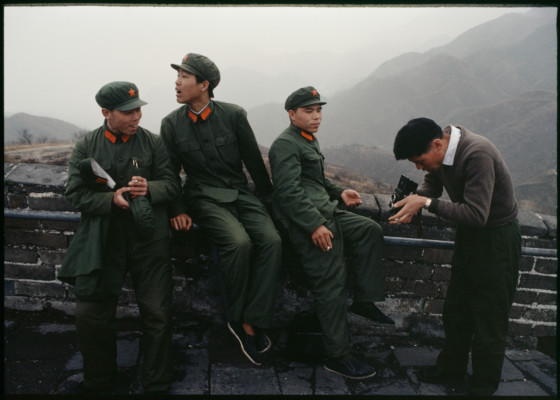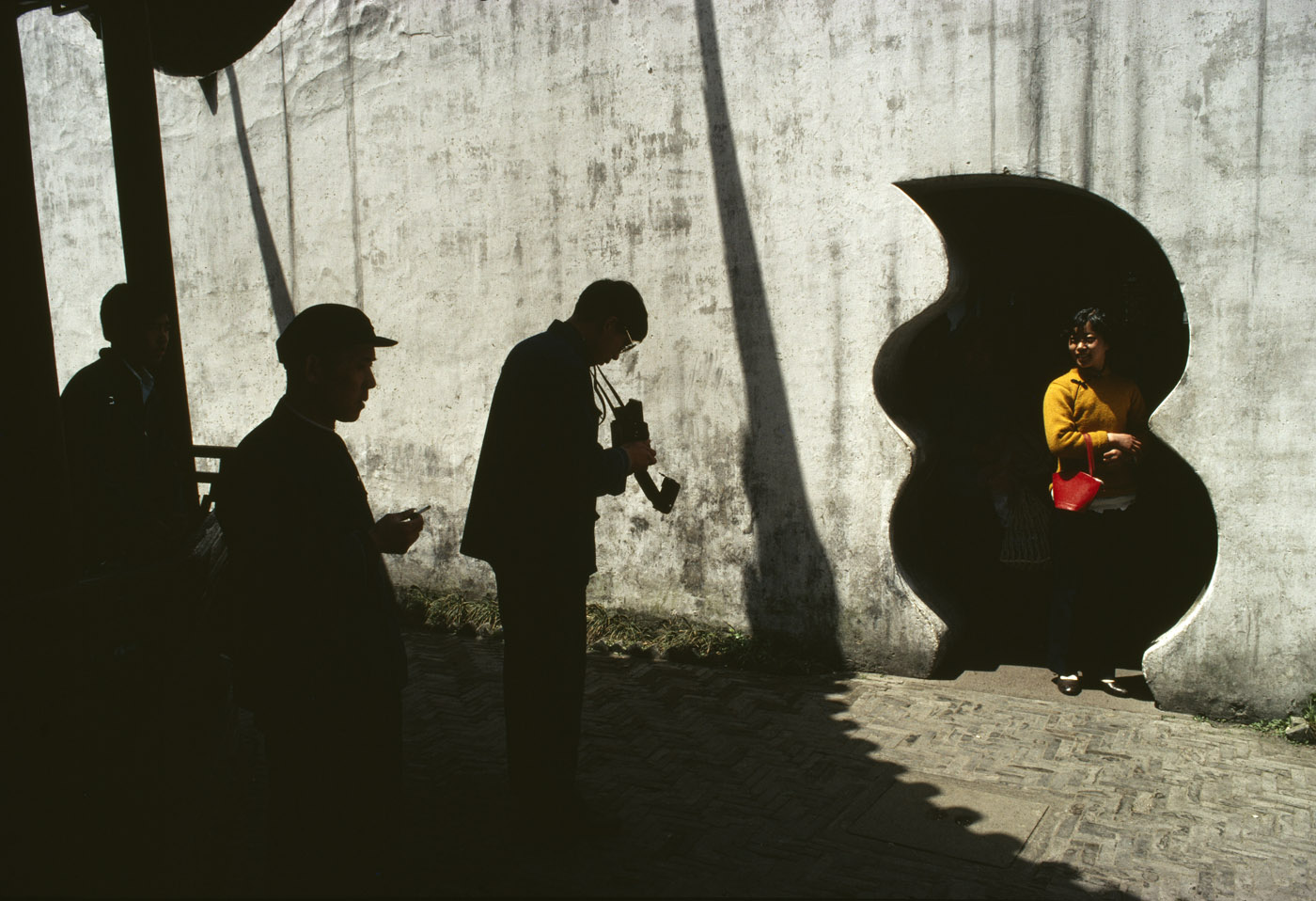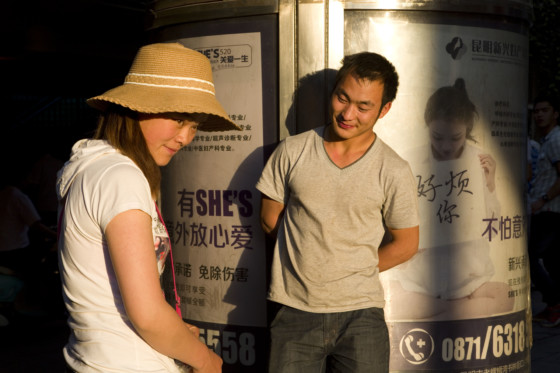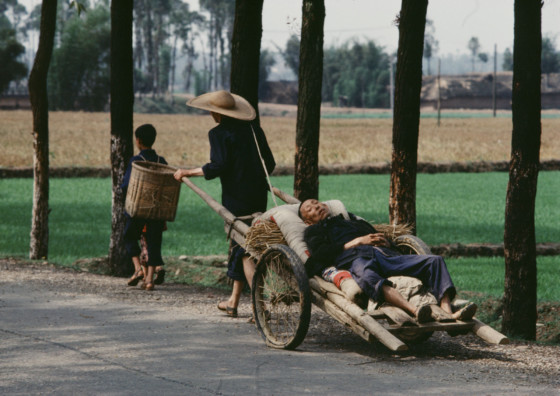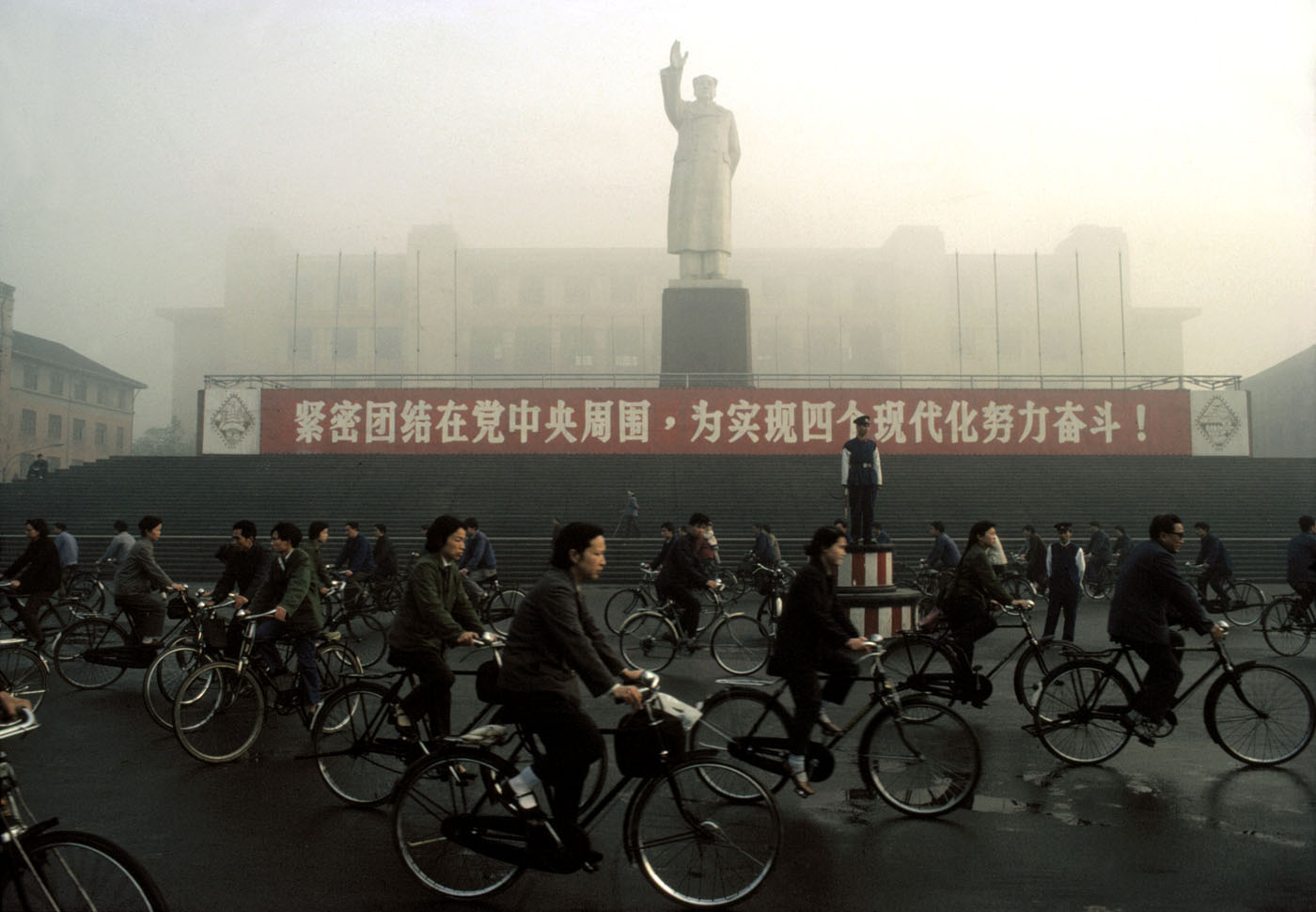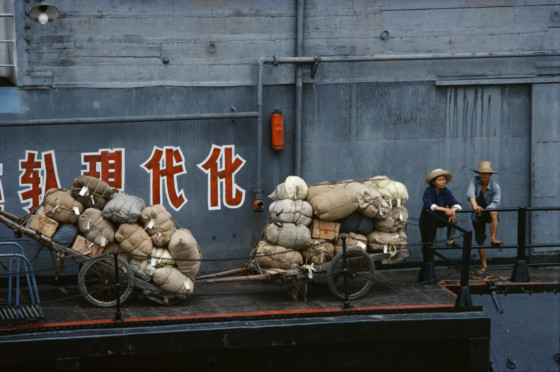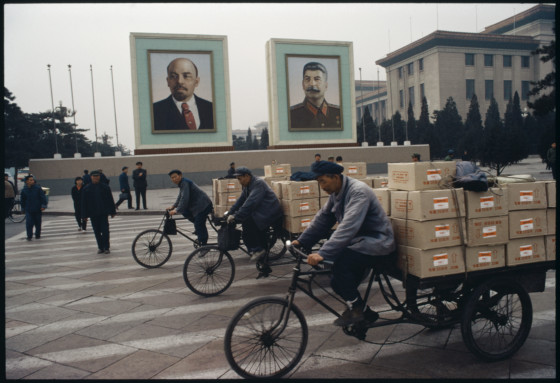Jean Loh reflects upon how the photographer’s decades of work in China have created a vivid portrait of a country forever on the move
From Magnumphotos /By Bruno Barbey / Nov.18
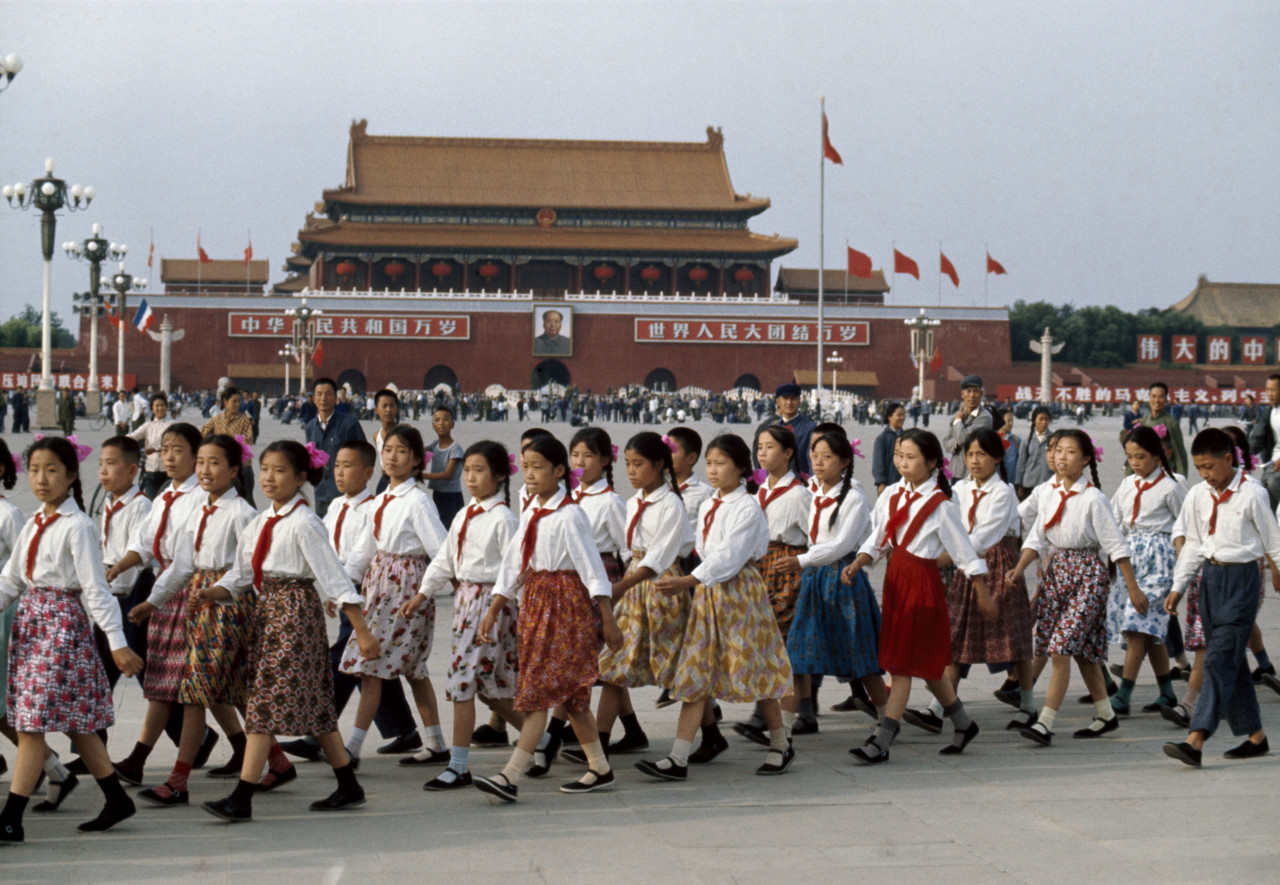
The first Chinese-language publication of Bruno Barbey’s monograph on the country is now available. Jean Loh – a photography curator and publisher as well as author of the book’s foreword – reflects here upon the French photographer’s work in the country, his revolutionary use of color, and the portrait of an ever-changing nation which he has created. The new edition – a product of decades of work in China – designed and edited by Barbey’s wife, Caroline Theinot-Barbey, was published in April, 2019, by Beijing United Publishing Co., Ltd & Post Wave Publishing. 69 images from Barbey’s work in the country have been acquired by The National Art Museum of China (NAMOC).
The book, Color of China, by Bruno Barbey – a collection of images which he took in China from 1973 to 2018 – will finally be released by the Beijing publisher Post Wave at the end of April 2019, coinciding with the 70th anniversary of the founding of the People’s Republic of China. Of the Western photographers who came to China, few really got to the heart of the country as Barbey did.
Let’s first pay tribute to his elders at Magnum, those like Robert Capa, who documented the Sino-Japanese war in 1938, or Henri Cartier-Bresson who covered regime change in Beijing and Shanghai between December 1948 and 1949, and Marc Riboud, who arrived in 1957 in the middle of the Hundred Flowers Campaign, and would return in 1965 and 1971 during the Cultural Revolution.
The big difference between their work and Barbey’s is the surprise, tinged with a sense of nostalgia, aroused in members of the Chinese public who saw Barbey’s photos for the first time. Much of the visual memory of the People’s China from the first three decades of its history was marked by images made in black and white, while the China which Bruno shows is entirely in color! We even get the sense sometimes that it’s “yesterday’s China.”

Dong Qiang, in the preface of this book, recalls that “Those who love photography will always recall the beginning of Roland Barthes’ Camera Lucida: “One day, quite some time ago, I happened on a photograph of Napoleon’s youngest brother, Jerome, taken in 1852. And I realized then, with an amazement I have not been able to lessen since: ‘I am looking at eyes that looked at the Emperor.’”
When I met Bruno Barbey, it was the same amazement seeing the eyes of someone who had seen Zhou Enlai and Madame Mao. What’s more, he fixed them with a camera, and was able to let me see them in turn.
Barbey’s great contribution to the world of photography is his bold use of color at a time when everybody, or almost everybody, was working in black and white. We know that is why he spared no forces of energy, time, or means in an era when the processes of transmission were still very traditional – almost archaic – to ensure that his film would not discolor or get damaged.
This major difference means that Bruno Barbey’s China does not look like traditional photoreportage, his approach is rather more like the search for a Chinese identity, or an idea of China. What is China? he seems to wonder, like the man sitting at the feet of the Giant Buddha of Leshan (Sichuan, 1980). The China of 1973 and 1980 seems obsessed with the idea of catching up with the world outside.
Bruno Barbey chose to see and to show us in turn China’s reality. Beijing, Shanghai, the provinces of Sichuan and Guanxi are in his eyes so different and distinct from one another that we wonder if they are even part of the same country. His Kodachrome film in 1973 and 1980 faithfully captured the ochre red of the imperial palace of the Forbidden City and the morning blue of the Shanghai Bund.
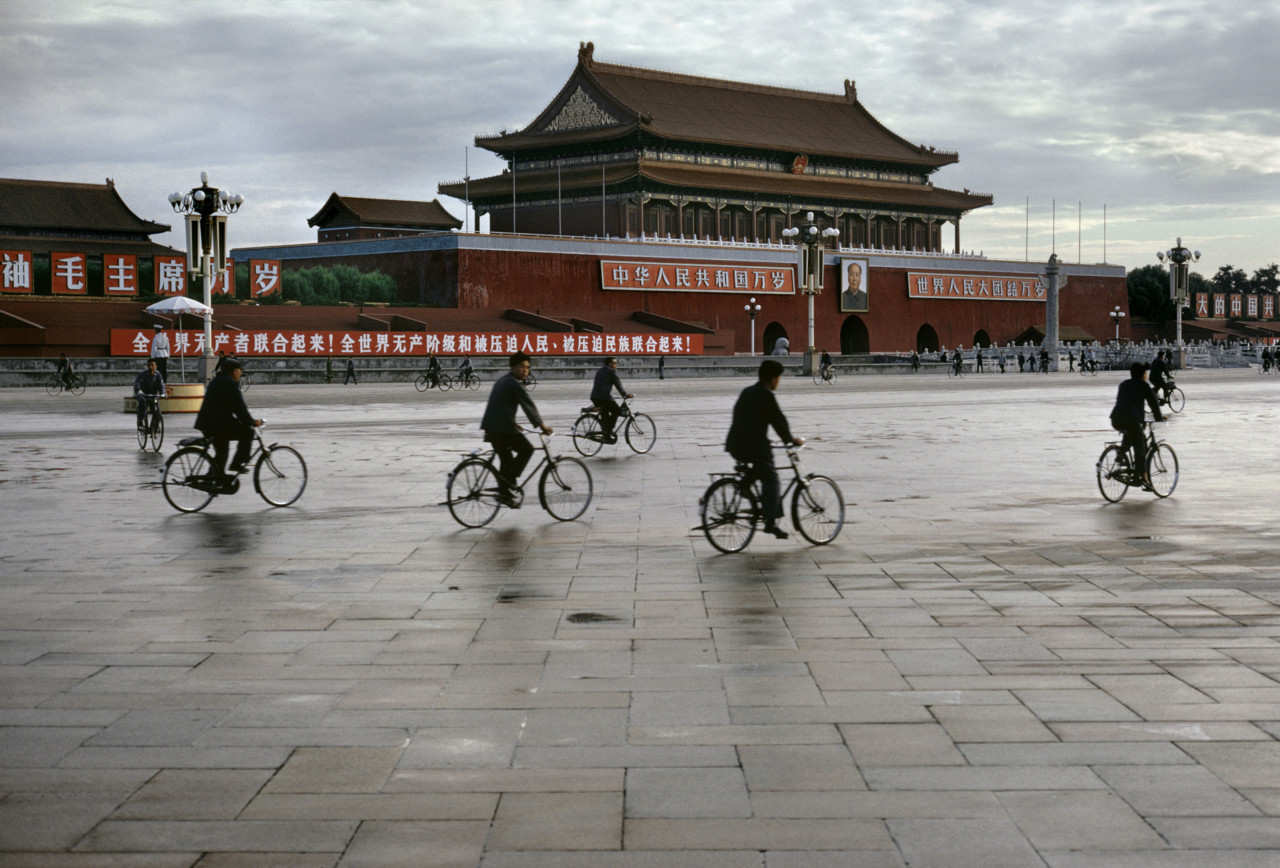
“His Kodachrome film in 1973 and 1980 faithfully captured the ochre red of the imperial palace of the Forbidden City and the morning blue of the Shanghai Bund”
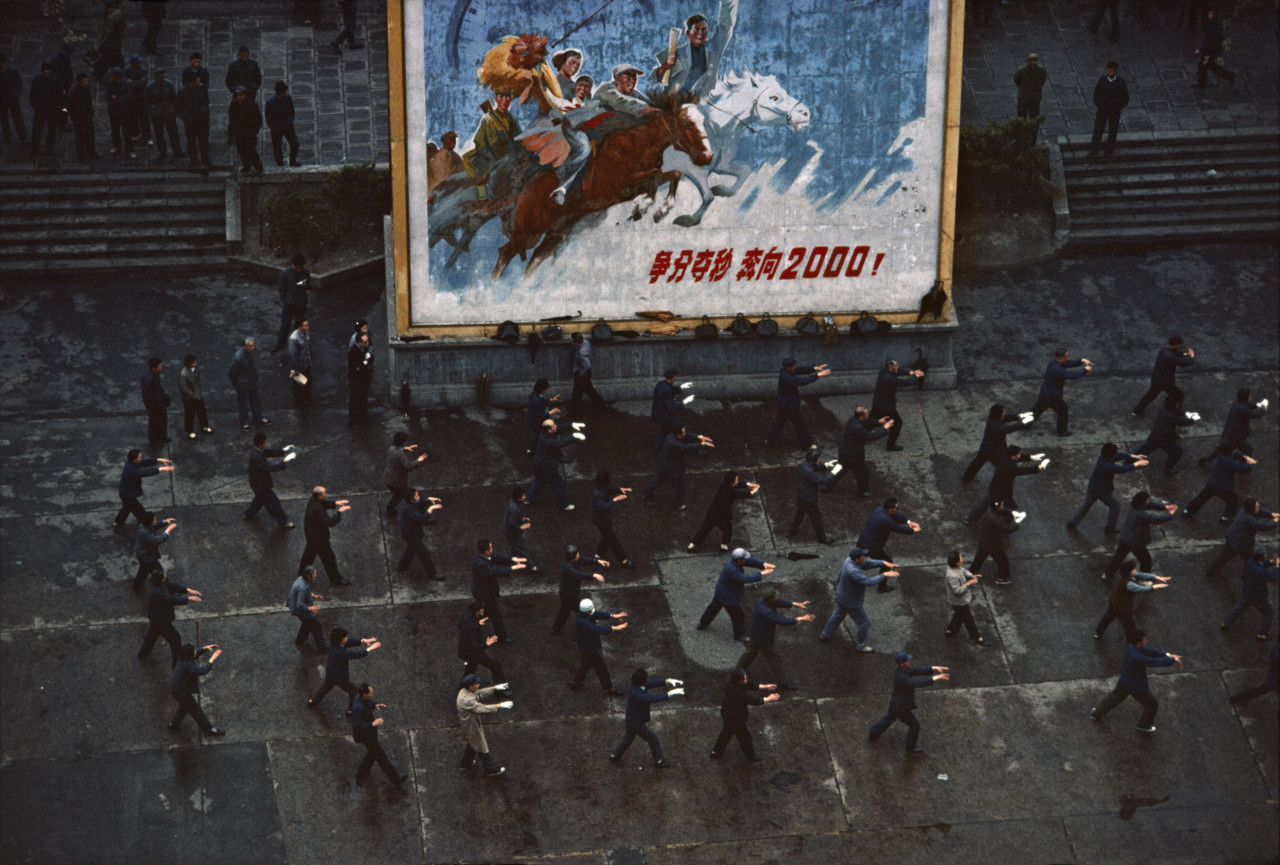
At the same time, Barbey translates the meaning of the images through the displayed slogans, which involuntarily contain some irony: the image of the calm morning of the deserted red Tiananmen Square, disrupted only by a couple of cyclists, while the long red banner making the call: “Workers of the World and Oppressed Peoples, Unite!” The big poster behind a group of tai-chi practitioners on the Shanghai Bund depicting horsemen launched into a race, spells out the slogan: “Without wasting a second, propel yourself towards the year 2000 at the opposite extreme of the slowness of this shadowboxing. Just seven years apart, these two slogans announce the deep upheavals that came to dramatically change China.
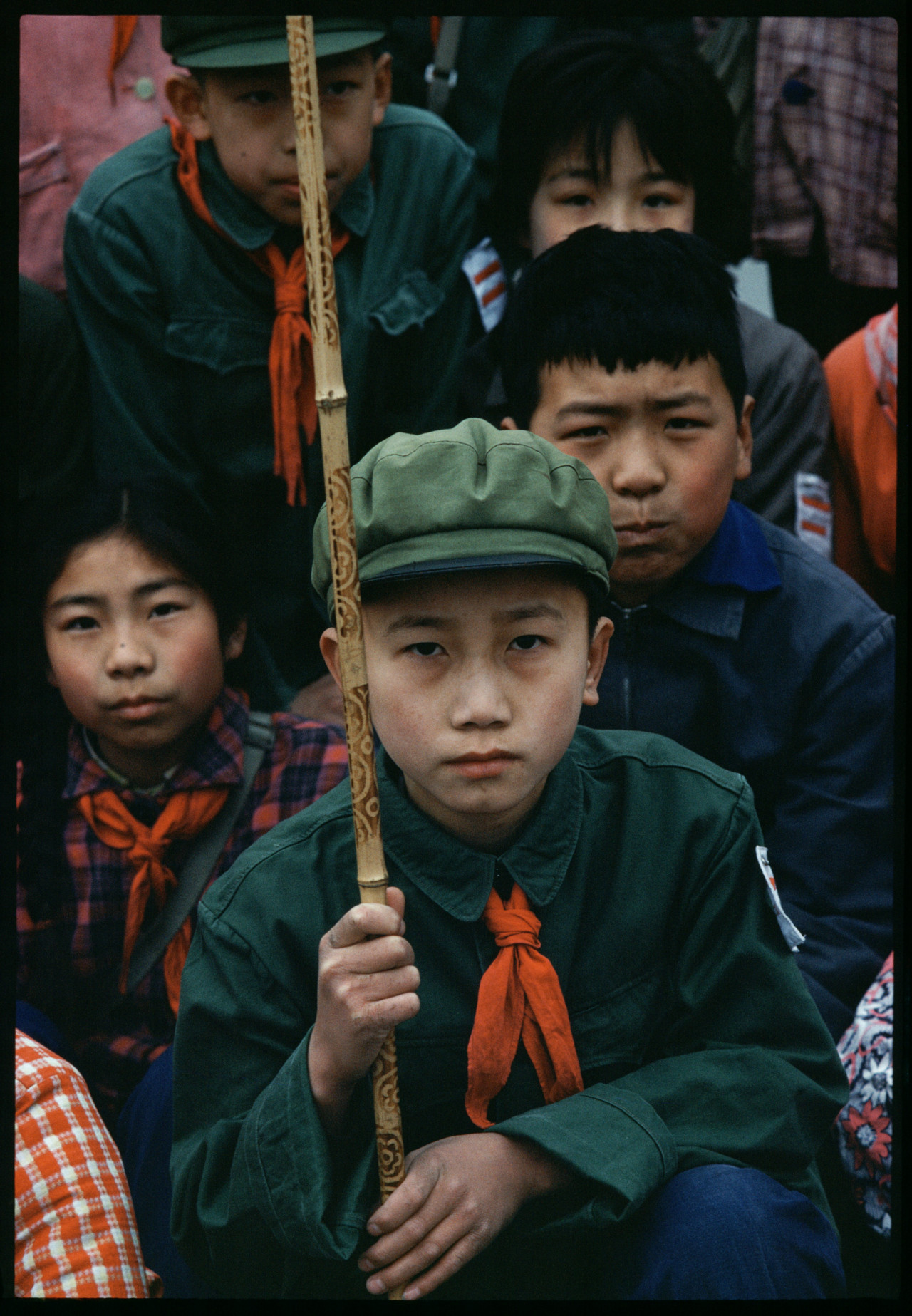 Bruno Barbey China. 1980. © Bruno Barbey | Magnum Photos
Bruno Barbey China. 1980. © Bruno Barbey | Magnum Photos“Despite his aptitude for seeing, only matched by his curiosity for all things Chinese, Barbey nonetheless remains faithful to his position of impartiality and objectivity”
Despite his aptitude for seeing, only matched by his curiosity for all things Chinese, Barbey nonetheless remains faithful to his position of impartiality and objectivity, which is why Jean-Monterosso considers his gaze “fair.” Barbey approaches China without preconceived notions or prejudices; his preparations consisted of a few study sessions spent at the Documentation Française in Paris. Unlike Victor Segalen, the sinologist, archeologist, poet and photographer who travelled to China three times between 1909-1917, the author of Journey to the Land of the Real (French: L’équipée: Voyage au Pays du Réel) who was fed by the excess of an imaginary China [qui était nourri d’un trop plein d’une Chine imaginaire], Bruno Barbey observes the “real” with this fair distance.
Barbey’s eye as a photographer enabled him, from 1980, to pick up on the Rolleiflex at the hands of the soldiers of the People’s Liberation Army, and the professional photographer at the Yu Garden in Shanghai, to the iPhone selfies by the vacationing new middle class on the beach of Qingdao, where he captures this couple in their swimsuits in the colors of capitalist Uncle Sam. Each scene tells the story of the China of the moment. And how well observed, how it had to be seen!
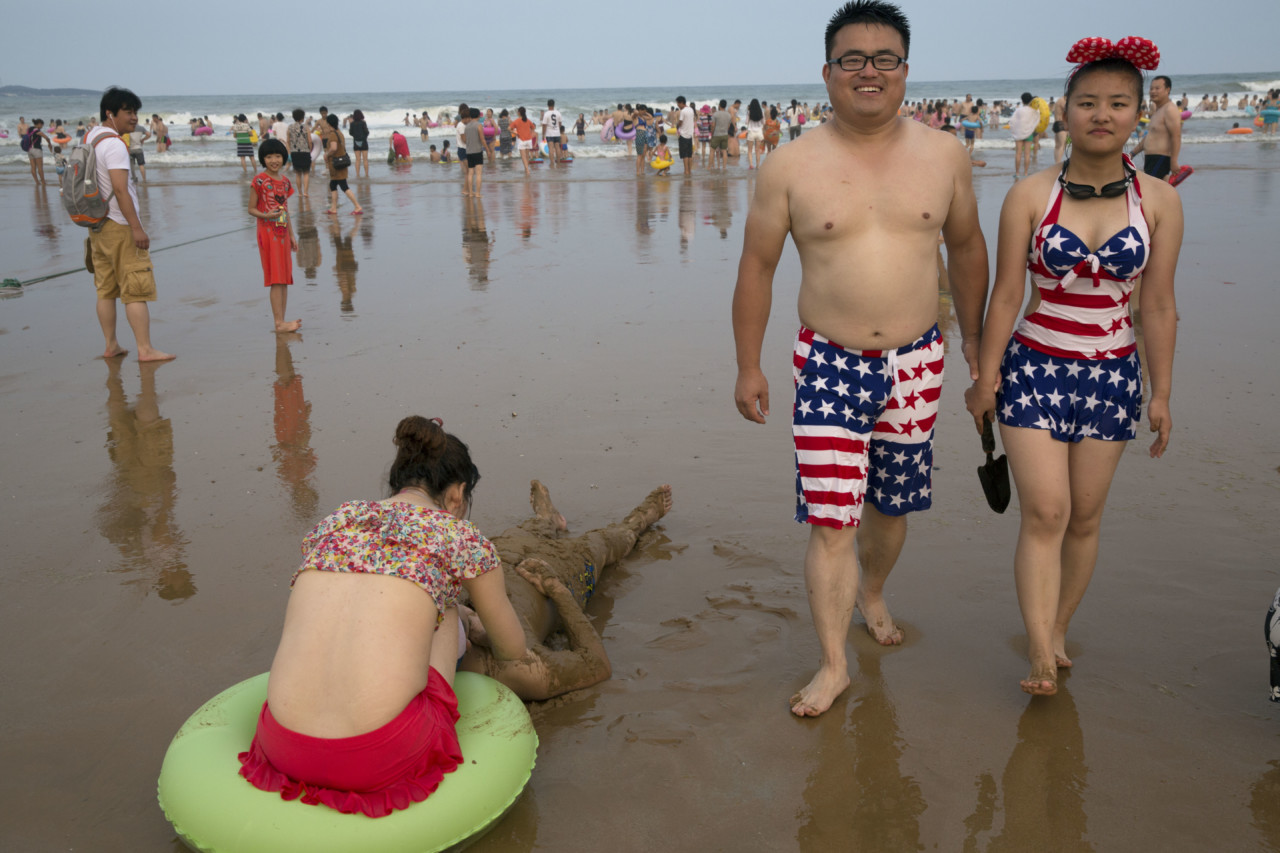 Bruno Barbey Qingdao. Shandong province. China. 2015. © Bruno Barbey | Magnum Photos
Bruno Barbey Qingdao. Shandong province. China. 2015. © Bruno Barbey | Magnum PhotosBruno Barbey’s eye shows us how China passes from the nation of the “popular masses” in the years of the Cultural Revolution – for example in his telling image of the poster celebrating the Constitution of Anshan Steel in 1973 – toward the emergence and strengthening of the individual, through the images of two lovers in Shanghai who no longer hesitate to embrace in public on the Bund, or the couple flirting in Kunming in front of a poster advertising a safe medicine for painless abortion.
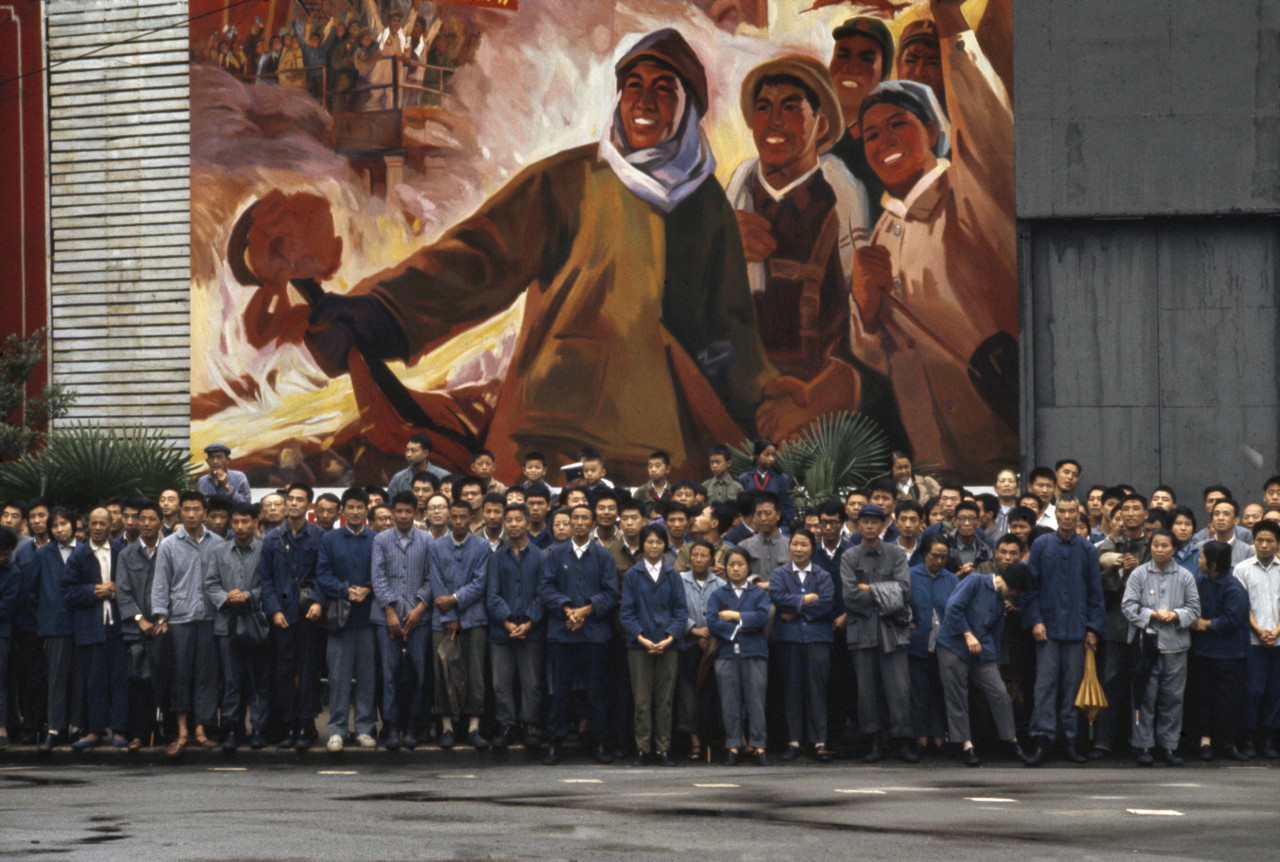
“Barbey’s journey was not only a simple passage through space, but also through time”
Barbey’s journey was not only a simple passage through space, but also through time – from 1973 to 2018 – a real challenge; the China Expo in 2010 which Barbey eagerly photographed already appears, today, a little washed out in comparison with the contemporary China that is galloping towards 2020.
The magic of photography makes certain images timeless, like those of the children: the tenderness that Bruno Barbey’s gaze holds for these youths is striking. In the alley of a working class neighbourhood in Shanghai in 1980, the carefree innocence of childhood permeates this game of ping-pong played on an old wooden board with a brick in the place of a net, while the sense of effort to rise through the ranks is evident on the concentrated faces of the little girls in accordion class at the Children’s Palace in Shanghai, admirably organized in a geometry punctuated by the black and white keyboards of the instruments and the rectangles of the notation stands. The little accordionist in the upper left corner recognized herself in the photo and contacted Bruno over thirty years later: it turns out she is now married and living comfortably between New York and Palm Beach in the United States.
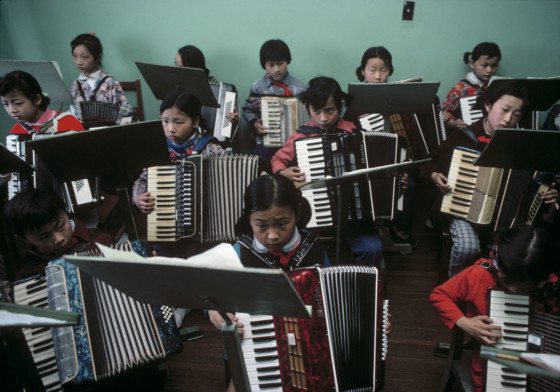
“Of the Western photographers who came to China, few really got to the heart of the country as Barbey did.”
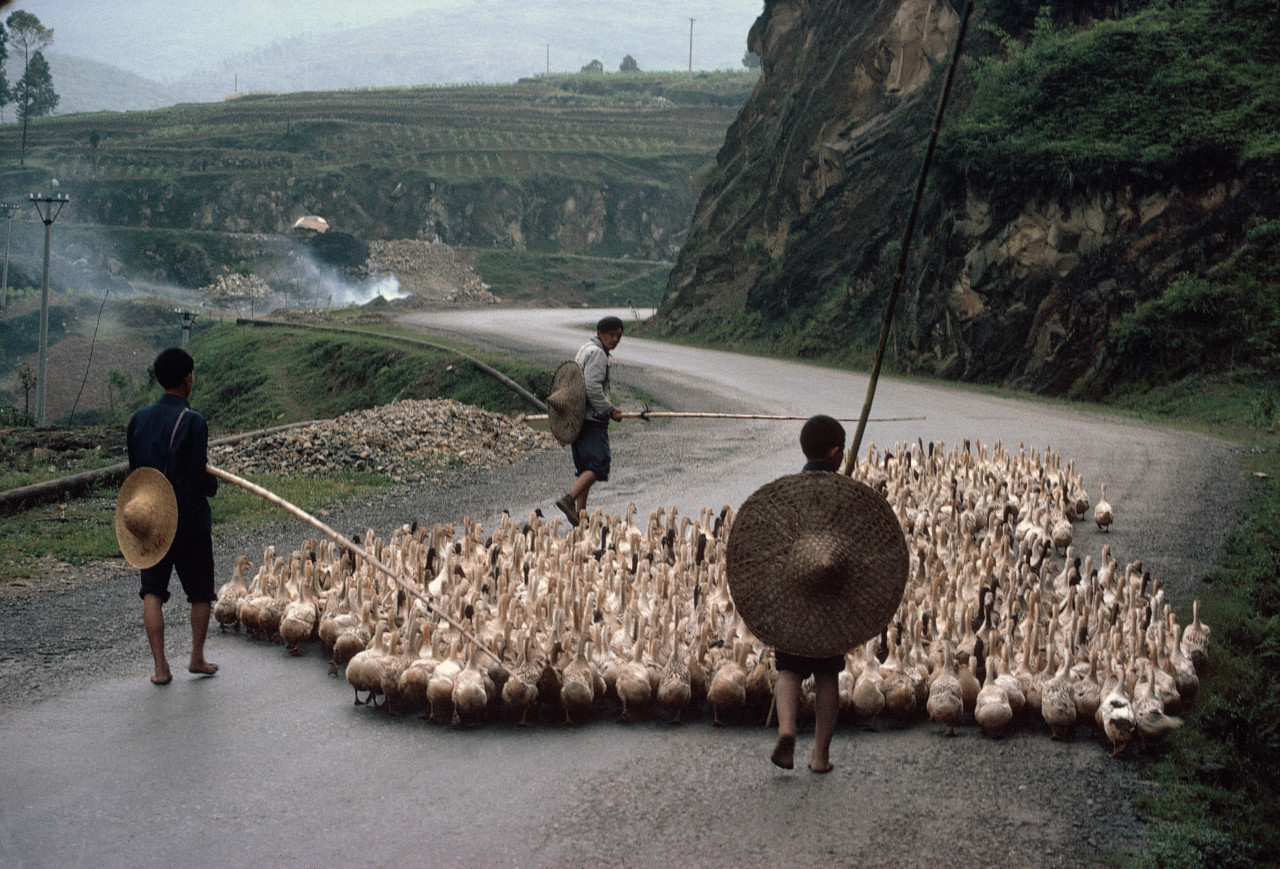
In Sichuan, Barbey noticed the slogans and propaganda posters for the Four Modernizations (a campaign led by Deng Xiaoping for the new era of reform) while bicycles and tricycles, including handcarts, abounded on city streets and country roads alike, even on this boat in Chongqping with a slogan marked “Modernization of Transport.” On the square in Chengdu, under the raised arms of President Mao, cyclists circulate in all directions; near Tiananmen Square in Beijing these three delivery men in boiler suits pedal their tricycles with heavy wares from the factory, under the impassive gaze of Lenin and Stalin, who would never have imagined what China has become: reflections of a new Shanghai, and architectural splendors of a futuristic Beijing.
Bruno Barbey is therefore not simply a traveller in space, but also a traveller in time.
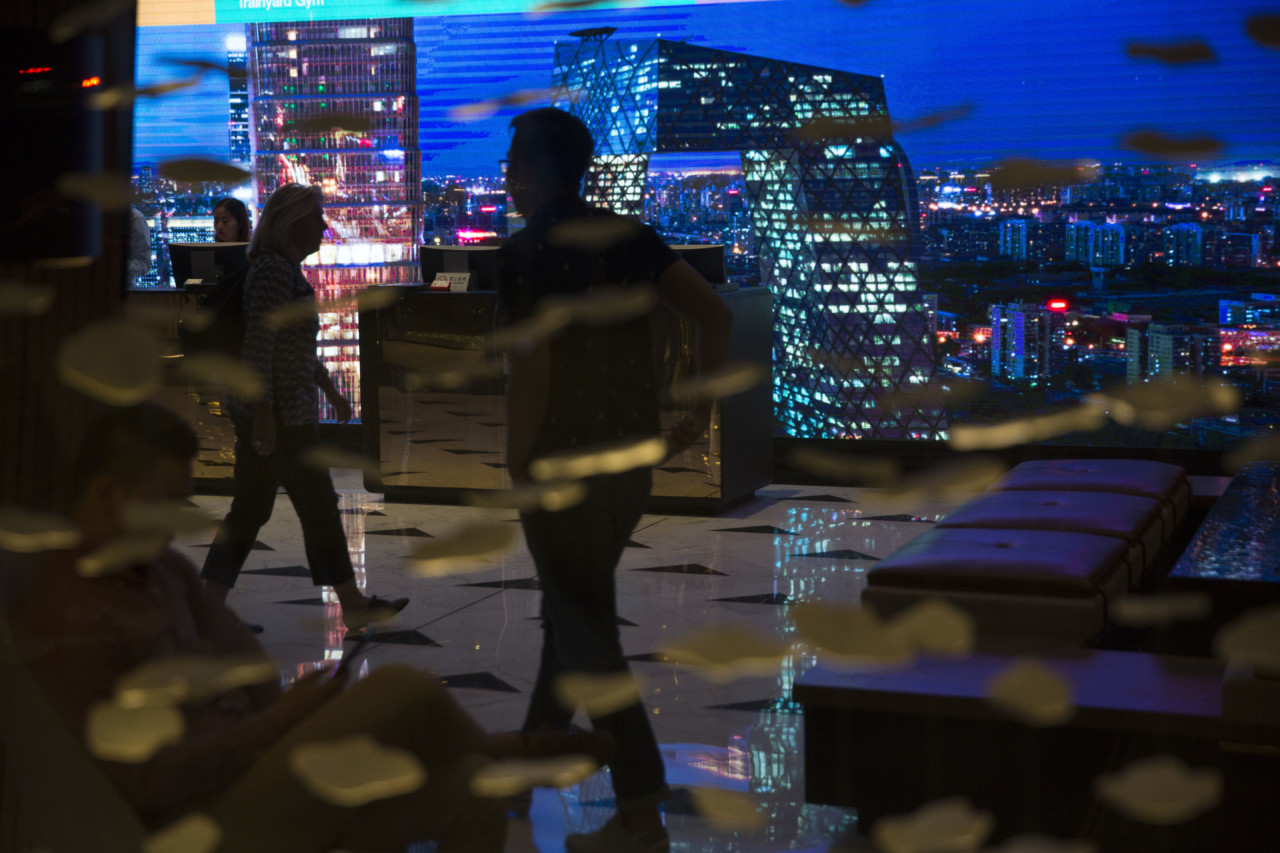
From Guilin’s cormorant fishermen to festivalgoers at the Qingdao Beer Festival, from the Macao pedicab driver taking a nap to the pilgrim pushing his bike outside the Id Kah Mosque in Kashgar, from the intimate portrait of a troubled prime minister to a group of children at the end of their spectacle during the Photo Festival of Pingyao, Barbey has not stopped questioning “reality” in this Land of the Real.

“From Guilin’s cormorant fishermen… to a group of children at the end of their spectacle during the Photo Festival of Pingyao, Barbey has not stopped questioning “reality” in this Land of the Real.”
